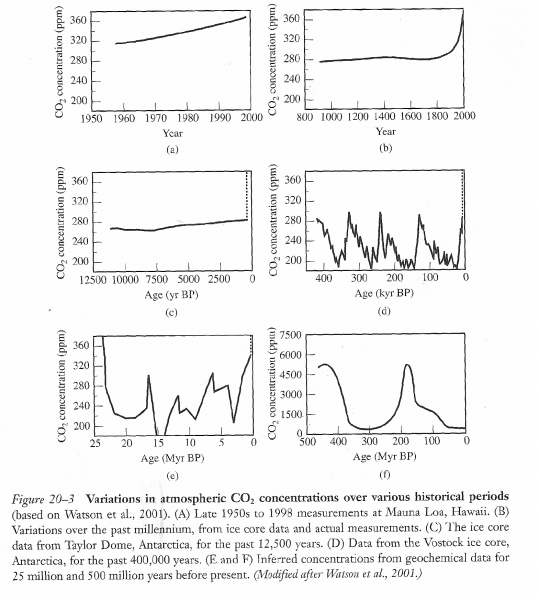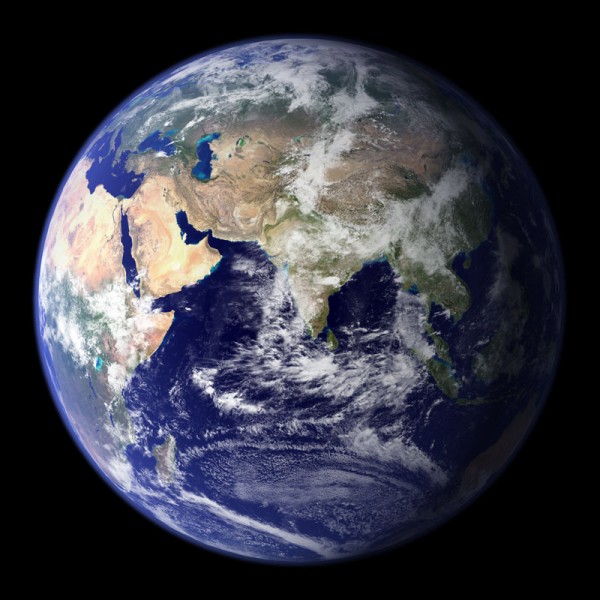Scientific consensus is solid that climate change is real and is caused by humans. Of course the climate is always changing, but it’s changing way faster than normal because of our burning of fossil fuels. The takeaway from this article is that atmospheric carbon dioxide concentrations are increasing at a rate about 650 times faster than the natural rate (pre-Industrial Revolution before we used fossil fuels).
When I was an undergrad at Harvey Mudd College I was taking an introductory environmental engineering course (2003 or 2004). We had to make an educational website for middle school students on an environmental topic of our choice. I chose global warming, and I remember that my professor was disappointed (or something else?) that I hadn’t learned more about natural variation of carbon dioxide levels over longer historical time scales. I would think that this would be an ideal topic to cover in an environmental engineering course, but I’ll also accept that it’s important to learn to do deep independent research as well.
I recently (2013) came across these figures in a textbook that do an amazing job of putting historical atmospheric carbon dioxide concentrations into perspective, answering the questions I should have answered back in undergrad!
The figure below was made in 2001, contains data up until 1998, and shows carbon dioxide concentrations on various time scales going back hundreds of millions of years. The figure’s caption explains where the data came from, and below I’ll discuss each of the graphs, (a) through (f).

a) The concentration of carbon dioxide was around 320 ppm in 1960 and grew to about 370 ppm by 1998. [Today it’s over 400 ppm]. This is a rate of 50 ppm in 38 years, or 1.3 ppm per year.
b) CO2 was essentially constant at about 280 ppm from the year 900 to 1850 when the industrial revolution started, and then began increasing rapidly from there.
c) About 11,000 years ago (years before present) the concentration was around 260 ppm and slowly climbed to 280 ppm then rapidly increased starting at the industrial revolution around 1850. The pre-industrial change in concentration during this period was about 0.002 ppm per year. (20 ppm over 10,000 years). The rate of increase from 1960 to 1998 (part a) is about 650 times (!) faster.
d) Looking over the course of hundreds of thousands of years, we see a cyclical behavior that people allude to when they say “the climate is always changing”. Over this time scale, carbon dioxide levels fluctuated between 200 ppm and 280 ppm. In each cycle, it rose by 80 ppm in about 33,000 years and fell again by 80 ppm in about 67,000 years. This corresponds to a change between about 0.001 and 0.002 ppm per year. This makes sense, as it’s about the same number as in (c) which is the same natural fluctuation seen over a shorter time period. According to this graph, we haven’t had concentrations above 280 ppm in over 400,000 years, and we’re at 400 ppm and rising.
e) At the scale of millions of years we can’t even see the fluctuations in graph (d) because they are small relative to the time span. I’m not sure what was going on 25 million years ago when the concentration was high and falling, but this is a key takeaway: before the industrial revolution the planet didn’t have concentrations above 300 ppm for almost 25 million years!
f) Now we’re looking at HUNDREDS of millions of years ago and I was surprised that concentrations were much higher, over 5000 ppm. According to Wikipedia, land plants first appeared about 450 million years ago, and trees appeared in the Middle Devonian period, about 390 million years ago. So it seems like plants and trees (which consume CO2 and produce O2) were responsible for changing the climate from over 5,000 ppm down to the levels in which we humans would ultimately develop.
I don’t know why CO2 levels increased around 220 million years ago. But even though that increase looks rapid, we have to keep in mind it was over millions of years. Let’s do the math: 220 million years ago, CO2 was at about 1500 ppm. 190 million years ago it was roughly 5500 ppm. A change of 4000 ppm over 30 million years is 0.00013 ppm/year. So although the change was large, the yearly rate was very slow. Today’s rate (1.3 ppm/year) is about 12,000 times faster than during this large change 20 million years ago.
Conclusions
CO2 is increasing at a rate that far exceeds any in at least the past 500 million years on this planet.
The fastest CO2 changes naturally is 0.002 ppm per year, while today it’s about 1.3 ppm per year, 650 times faster. This is because we’re burning an incredible amount of fossil fuels which represent carbon dioxide trapped in organic matter over millions and millions of years released by us in less than 200 years.

